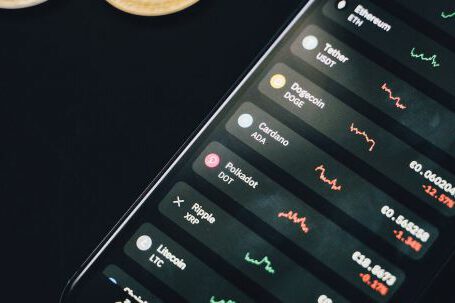Investing in stocks can be a great way to grow your wealth over time. One of the ways that investors can benefit from owning stocks is through dividends. Dividends are a portion of a company’s earnings that is distributed to its shareholders. In this article, we will explore what dividends are, how they work, and why investors might consider them as part of their investment strategy.
Understanding Dividends
Dividends are essentially a way for companies to share their profits with their shareholders. When a company earns a profit, it has a few options for what to do with that money. It can reinvest it back into the business for growth, pay down debt, or distribute it to its shareholders in the form of dividends. Dividends are typically paid out on a regular basis, such as quarterly or annually.
Dividend Yield
One of the key metrics that investors consider when evaluating dividend-paying stocks is the dividend yield. The dividend yield is calculated by dividing the annual dividend payment by the stock’s current share price. For example, if a stock pays an annual dividend of $2 per share and its current price is $50, the dividend yield would be 4%. A higher dividend yield may indicate a more attractive investment for income-focused investors.
Types of Dividends
There are different types of dividends that companies can offer to their shareholders. The most common type is a cash dividend, where shareholders receive cash payments directly into their brokerage accounts. Another type is a stock dividend, where shareholders receive additional shares of the company’s stock instead of cash. This can be an attractive option for investors looking to increase their ownership stake in the company without having to buy more shares on the open market.
Dividend Reinvestment Plans
Some companies offer dividend reinvestment plans (DRIPs) as an option for shareholders. With a DRIP, instead of receiving cash dividends, shareholders have the option to reinvest their dividends back into buying more shares of the company’s stock. This can be a convenient way to compound your investment over time without incurring transaction fees.
Tax Implications
It’s important to note that dividends are taxable income. The tax rate on dividends depends on several factors, including your overall income and whether the dividends are considered qualified or non-qualified. Qualified dividends are generally taxed at a lower rate than ordinary income, making them a more tax-efficient investment for many investors.
Considerations for Dividend Investors
While dividends can be an attractive feature for many investors, it’s important to consider a few key factors when evaluating dividend-paying stocks. Firstly, a company’s ability to consistently pay dividends is crucial. Investors should look at a company’s dividend history and financial health to determine if it has the capacity to continue paying dividends in the future.
Secondly, the sustainability of the dividend is essential. A company that pays out more in dividends than it earns in profits may not be able to maintain its dividend payments over the long term. Investors should analyze a company’s payout ratio, which is the percentage of earnings that are paid out as dividends, to assess the sustainability of its dividend.
In conclusion,
Dividends are a way for companies to reward their shareholders by sharing a portion of their profits. They can be an attractive feature for income-focused investors looking for regular cash flow from their investments. By understanding the different types of dividends, considering the dividend yield, and evaluating a company’s ability to sustain its dividend payments, investors can make informed decisions when incorporating dividends into their investment strategy.





